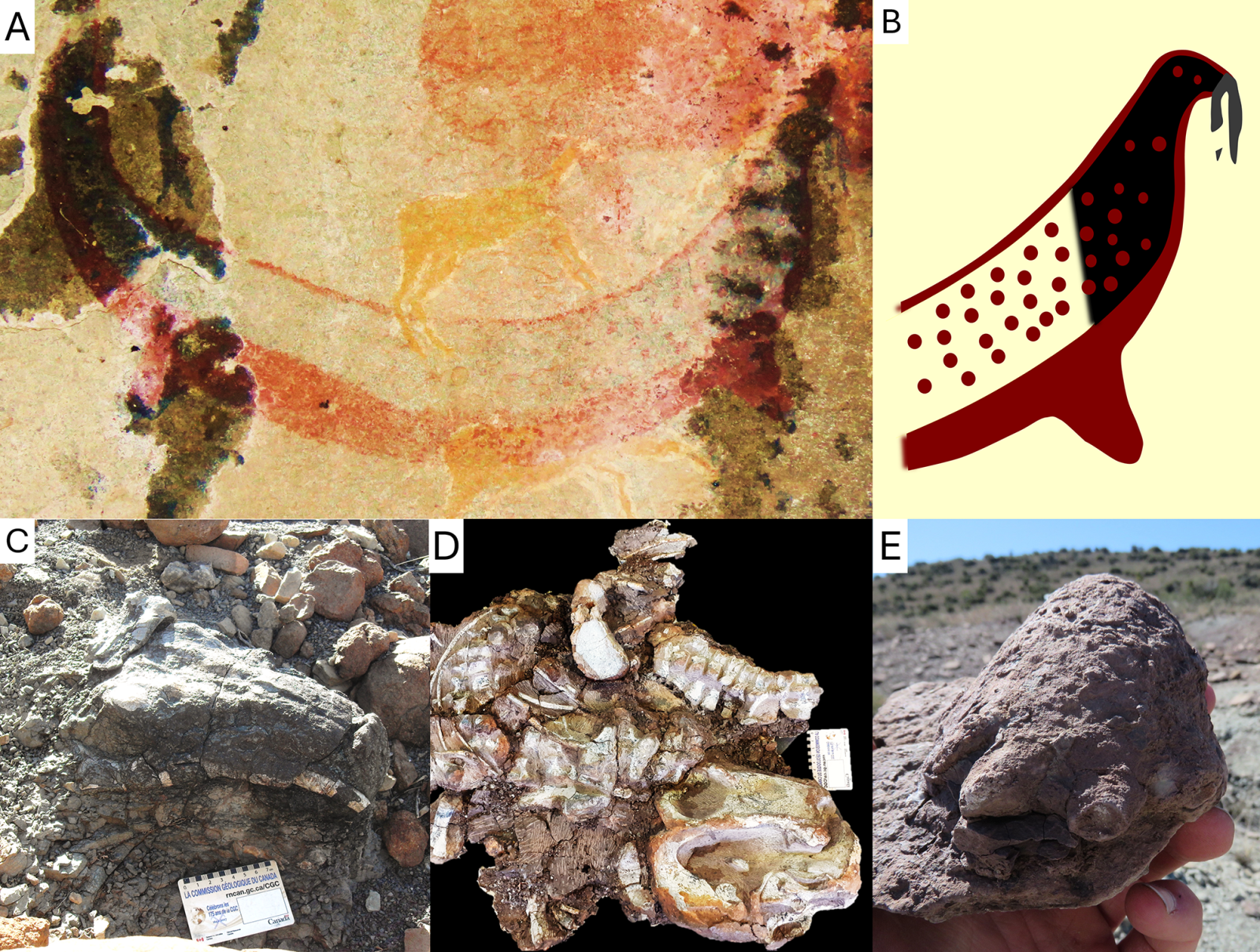Follow us on Google News (click on ☆)
The San people, indigenous to southern Africa, may have included fossilized creatures from the Karoo Basin in their artwork. This hypothesis is now the subject of much speculation.

Interpretation of the tusked animal from the Horned Serpent panel and its dicynodont-like features.
A, Photo of the tusked animal from the Horned Serpent panel.
B, Interpretive drawing of its head.
C, Skull of a Lystrosaurus (03-14-2024, Oviston Nature Reserve) showing its prominent tusks, photographed in situ at the time of its discovery, before excavation, and not prepared.
D, Complete skeleton of a Lystrosaurus (BP/1/9100, Oviston Nature Reserve) with its spine bent in a “death pose” (opisthotonic posture), ex situ, prepared.
E, The "mummified" foot of a Lystrosaurus (08-28-2022, Fairydale, Bethulie District) showing the wart-like appearance of its preserved skin, ex situ, not prepared.
In South Africa, the wall of the "Horned Serpent panel" features an intriguing painting of an unknown animal. With its curved tusks, it could be mistaken for a walrus, but this theory was quickly dismissed since this animal has never lived in the region. A saber-toothed tiger was also ruled out as no fossil of this species has been found nearby.
According to researchers, the painting bears a striking resemblance to the dicynodont, an extinct mammalian reptile. Fossils of this animal are indeed abundant in the Karoo region. These prehistoric creatures, which lived even before dinosaurs, are often found on the surface due to erosion.
Julien Benoit, a researcher at the University of the Witwatersrand, suggests that these fossils may have inspired the rock art of the San people. The San, as hunter-gatherers, frequently incorporated elements from their environment into their art. Fossils found locally may have been interpreted as remains of real animals, leading to accurate depictions. This practice is highly unusual, as the San typically depicted their surrounding wildlife, not imaginary creations based on fossils.
According to Benoit, the San did not create purely imaginary animals. Their art, deeply rooted in reality, rules out any fanciful interpretation of the depicted creature.
If this hypothesis is validated, it would mean that the San actually discovered these fossilized creatures a decade before Western scientists did. A finding that could reshape our understanding of scientific history.
What is a dicynodont?
Dicynodonts are herbivorous mammalian reptiles that lived about 265 to 200 million years ago. They belong to the therapsid group, which includes creatures that eventually evolved into mammals. Their name means “two dog teeth,” in reference to their large, curved canines.
These creatures, which existed long before the rise of the dinosaurs, were recognizable by their beak, similar to that of a turtle, and their tusks, comparable to those of a walrus. Dicynodonts became extinct long before humans appeared, but their fossils, which are abundant in areas like the Karoo Basin in South Africa, remain valuable to paleontologists.